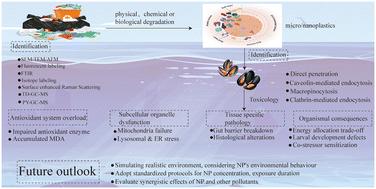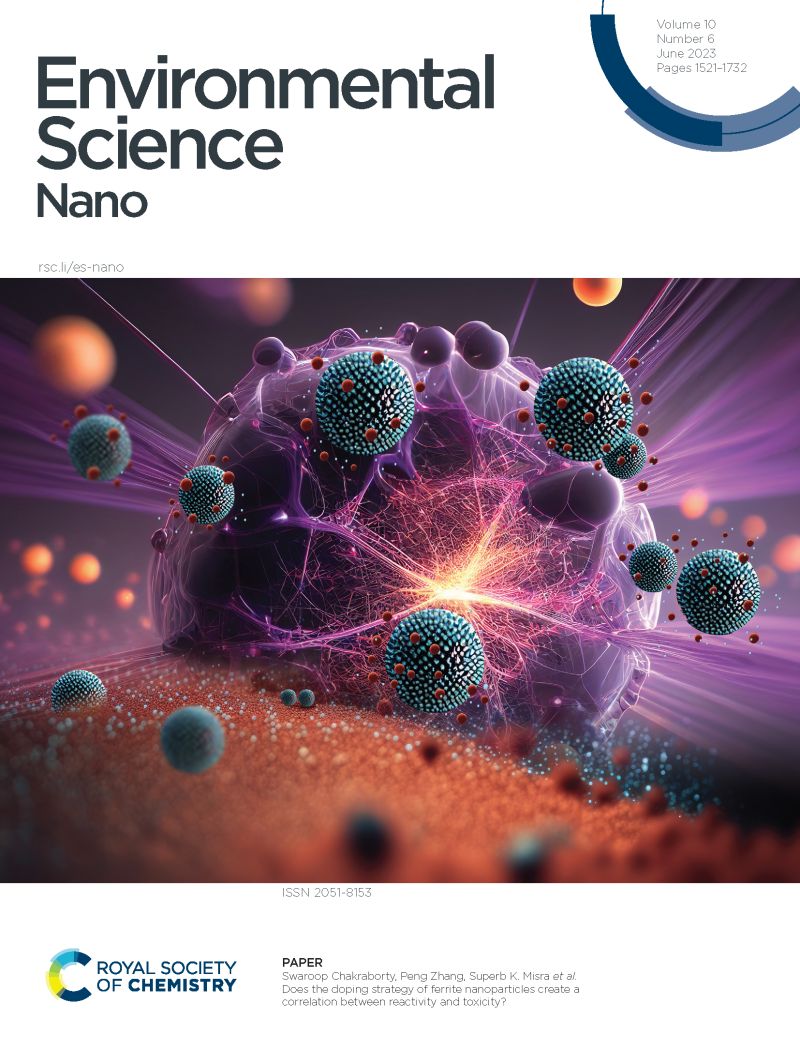The stealthy journey of nanoplastics in bivalves: accumulation dynamics and toxic burden
IF 5.1
2区 环境科学与生态学
Q1 CHEMISTRY, MULTIDISCIPLINARY
引用次数: 0
Abstract
The strong filter-feeding capacity of bivalves makes them more prone to accumulating nanoplastic particles from their environment, posing a threat to aquaculture and food safety. Despite their inconspicuous size, nanoplastics embark on a stealthy invasion through bivalve tissues, evading conventional detection. Reliable detection methods for nanoplastics are essential for risk assessment. This paper provides a comprehensive review of nanoplastic detection techniques in biological tissues and suggests improvements in in situ detection and AI-based recognition methods. These advancements are critical to unveiling the hidden pathways of nanoplastics in biological systems. Next, we summarize the endocytic mechanisms and bioaccumulation patterns of nanoplastics based on particle size classification and realistic environmental scenarios, identifying gills and hepatopancreas as primary accumulation targets. This dynamic accumulation process highlights how nanoplastics progressively infiltrate key organs, escalating their toxic burden. Additionally, this paper offers a thorough overview of the pathways through which nanoplastics breach biological barriers and trigger cascading reactions, from cellular stress to organelle dysfunction, tissue damage, and ultimately organismal consequences. These cascading effects underscore the insidious yet pervasive toxic burden imposed by nanoplastics. Finally, this review identifies key research gaps, including the synergistic or inhibitory effects of coexisting marine pollutants on bivalve bioaccumulation and the unclear pathways and efficiency of nanoplastic accumulation in filter-feeding bivalves under eco-corona regulation. Unraveling these uncertainties is vital to mapping the full journey of nanoplastics and mitigating their ecological toll. This review aims to enhance the understanding of nanoplastic–bivalve interactions and guide mitigation strategies for their ecological effects.

纳米塑料在双壳类动物体内的潜行:积累动力学和毒性负担
双壳类动物强大的滤食能力使它们更容易从环境中积累纳米塑料颗粒,对水产养殖和食品安全构成威胁。尽管纳米塑料的尺寸并不显眼,但它们可以通过双壳类动物的组织潜行侵入,避开常规检测。可靠的纳米塑料检测方法对风险评估至关重要。本文对生物组织中的纳米塑性检测技术进行了综述,并对原位检测和基于人工智能的识别方法提出了改进建议。这些进展对于揭示纳米塑料在生物系统中隐藏的途径至关重要。接下来,我们基于粒径分类和现实环境,总结了纳米塑料的内吞机制和生物蓄积模式,确定了鳃和肝胰腺是主要的蓄积目标。这一动态积累过程突出了纳米塑料如何逐渐渗透到关键器官,使其毒性负担不断升级。此外,本文还全面概述了纳米塑料突破生物屏障并引发级联反应的途径,从细胞应激到细胞器功能障碍、组织损伤以及最终的有机体后果。这些级联效应强调了纳米塑料带来的潜在而普遍的毒性负担。最后,本文指出了关键的研究空白,包括共存的海洋污染物对双壳类生物积累的协同或抑制作用,以及生态电晕调节下滤食性双壳类生物积累纳米塑料的途径和效率尚不清楚。解开这些不确定性对于描绘纳米塑料的完整历程和减轻其生态损失至关重要。本文旨在加强对纳米塑料与双壳类相互作用的认识,并指导其生态效应的缓解策略。
本文章由计算机程序翻译,如有差异,请以英文原文为准。
求助全文
约1分钟内获得全文
求助全文
来源期刊

Environmental Science: Nano
CHEMISTRY, MULTIDISCIPLINARY-ENVIRONMENTAL SCIENCES
CiteScore
12.20
自引率
5.50%
发文量
290
审稿时长
2.1 months
期刊介绍:
Environmental Science: Nano serves as a comprehensive and high-impact peer-reviewed source of information on the design and demonstration of engineered nanomaterials for environment-based applications. It also covers the interactions between engineered, natural, and incidental nanomaterials with biological and environmental systems. This scope includes, but is not limited to, the following topic areas:
Novel nanomaterial-based applications for water, air, soil, food, and energy sustainability
Nanomaterial interactions with biological systems and nanotoxicology
Environmental fate, reactivity, and transformations of nanoscale materials
Nanoscale processes in the environment
Sustainable nanotechnology including rational nanomaterial design, life cycle assessment, risk/benefit analysis
 求助内容:
求助内容: 应助结果提醒方式:
应助结果提醒方式:


